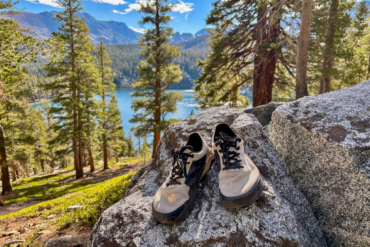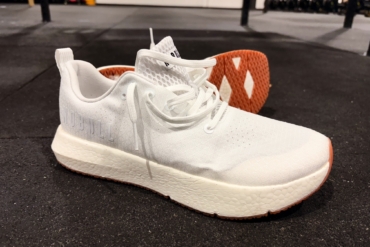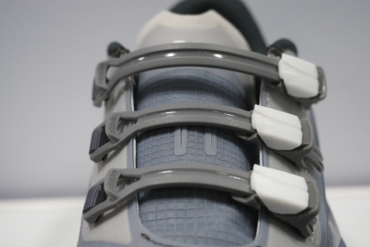A typical adventure race includes steep uphill climbs, river crossings, long treks off trail and miles upon miles of fast running on gravel roads and trails. As such, the footwear built for the sport must drain water quickly when submerged, protect the foot from roots and rocks, run fast when the trail opens up and offer enough comfort and support for the long haul.
Even if you never plan to do an adventure race, these shoes are worth a look. Backpackers, trail runners, peak baggers and trekkers all are candidates for this genre of multitasking footwear.
After testing footwear from several companies on four adventure races and a half dozen orienteering meets this summer, the one shoe I kept coming back to was the Salomon XA Raid 3D ($110). It has mesh outers and protective heal and toe caps. The shoes drain water fast, breathe well, run smoothly and fit comfortable and snug on my foot (though I have friends with feet that do not get along with the Salomon shape, so be sure to try them on at the store).

One fault I will mention with the Salomon XA Raid 3D is its tongue design, which is too thick and gangly. While it’s comfortable, the tongue is so bulky that it does not lay flat on the top of the foot, forcing it to stick up and thus providing a small opening into the shoe where debris can collect.
Salomon’s XA Pro 3D ($100, www.salomonsports.com), which is similar to the XA Raid 3D but a tinge less hefty, is probably the most popular adventure racing shoe on the market. I preferred the XA Raid 3D, however, as it has more protection around the ankle, keeping me safer from sticks and thorns, deflecting more debris and offering better support.

Both Salomon shoes use the company’s Kevlar Quickfit lacing system, which is a slick setup that allows you to pull on a loop and cinch the laces quickly and precisely. Though I’m a fan of the system for its fit and convenience, it has a major fault in that a broken lace or cincher out in the woods leaves you vulnerable because the thin Kevlar laces are difficult to tie. Ironically, after a couple months of hard abuse, one of the plastic lace cinchers broke on my XA Pro 3D while I was on a big hike. Salomon says this is an extremely rare problem, and, to be fair, I have never heard of it happening before my little mishap.
Second in line during my test was the Nike ACG Orizaba ($85, www.nike.com), a fast, streamlined shoe that has a sticky-rubber sole and niceties like a mid-foot support shank and an embedded forefoot plate to protect the foot. It is not as supportive as the Salomon XA Raid 3D, but it runs better and is more nimble, weighing just less than 12 ounces per shoe, which was the lightest of the tested models.

On the down side, I did not like Nike’s lacing system. It seems like an imitation of Salmon’s system, but done worse, as there are two plastic cinchers and a lot of extra lace that needs to be tucked in after you’re fit and snug in the shoes.
The Adidas Jasten ($90, www.adidas.com) has a funky, urban-inspired design that incorporates grey mesh uppers with subtle pink highlights. It is so airy and breathable that dust and fine sand may pass through the mesh, but this permeable nature also makes it quick draining and fast drying. But during testing, this was my least favorite shoe. It felt heavy and somewhat clunky on the run, as the heel is extra bulky.

Finally, Montrail’s Highline ($93, www.montrail.com) is an excellent trail runner. For straightforward jogging and sprinting in the outdoors, these are my top picks. But for adventure racing, it lacks the multitasking attributes necessary for long, varied and horrendous race courses.







